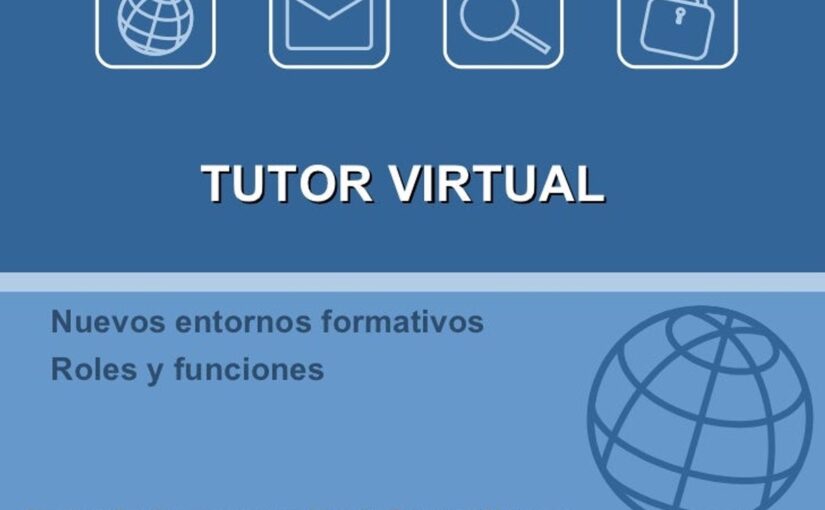Balancing college studies with part-time work is a multifaceted challenge that demands strategic time management, productivity optimization, and a keen focus on well-being. Students must navigate the complexities of academic demands, job responsibilities, and personal growth without compromising their health or academic performance. This article offers practical tips and insights to help students master the art of juggling their studies with part-time employment, ensuring they can thrive both in the classroom and in the workplace.
Key Takeaways
- Effective time management strategies, such as prioritizing commitments and creating structured schedules, are crucial for balancing academic and work demands.
- Maximizing productivity involves leveraging the skills and knowledge gained from work experience to enhance academic learning, as well as utilizing technology to stay organized.
- Maintaining physical and mental well-being is essential; incorporating exercise, ensuring adequate rest, and practicing stress-reduction techniques can support overall success.
- Financial stability can be achieved through careful budgeting, seeking additional financial resources, and aligning work hours with financial goals.
- Building a support network, including academic advisors, career counselors, and peer groups, can provide valuable guidance and resources to navigate the dual responsibilities.
Striking the Right Balance: Time Management Strategies

Prioritizing Academic and Work Commitments
Successfully juggling college studies with part-time employment hinges on the ability to prioritize academic and work commitments effectively. Allocating entire blocks of time to each responsibility ensures that you’re not constantly switching contexts, which can lead to inefficiency and stress.
When planning your week, overestimate the time you’ll need for each task. It’s better to have extra time than to be caught in a last-minute scramble.
Here are some practical steps to help you prioritize:
- Use a Planner or Calendar: Keep track of all your commitments in one place to avoid conflicts and last-minute panic.
- Prioritize Tasks: Determine which tasks require immediate attention and which can be scheduled for later.
- Create a Schedule: Dedicate specific times for classes, work, study, and leisure. This structure is essential for maintaining balance.
Remember, while it’s important to commit to your job and extracurricular activities, academic success should remain your primary focus. Balancing these commitments may mean making tough choices, such as reducing work hours or being selective with extracurriculars.
Effective Scheduling Techniques
Mastering the art of scheduling is pivotal for students juggling college and part-time work. Designate chunks of time for specific activities to ensure that each commitment receives the attention it deserves. This approach not only streamlines your day but also helps in maintaining a clear focus on the task at hand.
Effective strategies include the use of planners to keep track of all commitments, from exams to extracurricular activities. Prioritizing tasks is equally important; not all tasks are created equal, and recognizing which ones require immediate attention can save you from last-minute panic.
Creating a structured schedule that allocates specific times for studying, work, and leisure can make a significant difference. It’s about finding a rhythm that accommodates both your academic and work responsibilities while still allowing time for personal well-being.
Avoiding procrastination and minimizing distractions are also key. Social media and other diversions can wait; focused study time can drastically reduce the duration of tasks. Remember to take breaks; they’re essential for preventing burnout and can actually increase productivity.
The Role of Self-Discipline in Time Allocation
Self-discipline is the cornerstone of effective time allocation. It’s about making conscious decisions and sticking to them, even when distractions abound. Designating chunks of time for specific activities is a practical approach to self-discipline. By committing entire blocks of time to classes, work, and study, you create a structured environment that fosters focus and productivity.
The key to mastering self-discipline is to overestimate the time you’ll need for tasks rather than underestimating and finding yourself in a time crunch.
Adopting this mindset requires a shift from passive to active time management. It’s not just about using planners or digital calendars; it’s about engaging with these tools regularly and making them a part of your daily routine. Here are some effective strategies to employ:
- Use planners to map out your week, including class schedules, work hours, and study sessions.
- Minimize distractions by identifying your peak focus times and scheduling demanding tasks accordingly.
- Adjust your time blocks as needed, allowing flexibility for the unexpected.
Remember, self-discipline in time allocation is not just about academic success; it’s a skill that will serve you well beyond college, paving the way for a balanced and productive life.
Maximizing Productivity: Combining Work and Study

Leveraging Synergies Between Job Skills and Coursework
Identifying and capitalizing on the overlap between job skills and academic coursework can create a powerful synergy that enhances both professional and educational development. Students who align their part-time employment with their field of study often find that the practical experience enriches their understanding of academic concepts.
- Recognize the skills and knowledge applicable to both settings.
- Actively apply workplace experiences to academic projects.
- Seek out coursework that complements your job responsibilities.
By deliberately integrating job responsibilities with academic learning, students can create a mutually beneficial relationship between work and study, leading to deeper insights and more robust skill sets.
Furthermore, this approach can lead to increased efficiency, as the time spent on work can directly contribute to academic success. For example, a marketing student working part-time in a related role can use real-world data to inform their class assignments, thereby reinforcing theoretical knowledge with practical application.
Utilizing Downtime and Breaks Wisely
In the midst of balancing college studies with part-time employment, utilizing downtime and breaks wisely is crucial for maintaining productivity. Short breaks, as recommended on platforms like Quora, can significantly improve focus and attention, especially when taken every ninety minutes or so. It’s not just about taking a break, but also about choosing the right type of activity during these intervals to rejuvenate your mind.
Designating chunks of time for specific activities can help create a structured approach to your day. This includes allocating time for breaks, which are essential to prevent burnout and boost productivity. Remember, it’s okay to say no to additional commitments if it means protecting your well-being and maintaining efficiency.
Here are some practical tips for making the most of your breaks:
- Engage in a physical activity to refresh your body and mind.
- Practice deep breathing or meditation to clear your thoughts.
- Disconnect from digital devices to give your eyes and brain a rest.
- Plan your breaks in advance to ensure they are taken regularly.
Finding new ways to increase efficiency and productivity during your study and work schedule is an ongoing process. Utilize productivity apps to track your time and identify opportunities for improvement. By doing so, you can make informed decisions about how to best use your downtime.
Adopting Productivity Tools and Apps
In the digital age, productivity tools and apps are indispensable for students juggling college studies with part-time employment. These applications can help you track your time, manage tasks, and stay focused on your goals. For instance, time tracking apps can be a game-changer, allowing you to see where your time is spent and how to use it more effectively.
- Pomodor for a simple web-based Pomodoro timer.
- Marinara Timer for a shareable web-based Pomodoro timer.
- Forest for a mobile Pomodoro timer.
Embracing these tools can lead to new ways to increase efficiency and productivity. Remember, non-stop work leads to burnout, so it’s crucial to take breaks and use these apps to structure those breaks effectively.
Creating a schedule that includes specific times for studying, work, and leisure is essential. Avoiding procrastination and minimizing distractions are also key strategies that, when combined with the right productivity apps, can help you maintain a balanced college experience.
Maintaining Well-being Amidst a Busy Schedule

Incorporating Regular Exercise and Healthy Habits
Maintaining a healthy lifestyle is crucial for students who are balancing college studies with part-time employment. Regular exercise is not just beneficial for physical health, but also for mental clarity and stress management. Keeping a consistent workout schedule can be a game-changer, as it promotes discipline and can lead to increased productivity in both academic and work commitments.
It’s essential to integrate exercise into your daily routine, even if it’s just a short walk or a quick workout between classes and shifts. This habit not only keeps you fit but also energizes you for the tasks ahead.
Healthy eating is another pillar of well-being that shouldn’t be overlooked. Simple practices such as starting the day with breakfast, keeping healthy snacks on hand, and limiting sugar intake can make a significant difference in your energy levels and concentration. When dining out, opt for healthier options and consider portion control by planning to eat only half of what’s served.
Here are some tips to help you stay on track with your fitness and nutrition goals:
- Schedule your workouts as you would any other important appointment.
- Prepare meals in advance to avoid the temptation of fast food.
- Stay hydrated throughout the day.
- Get enough sleep to allow your body to recover and rejuvenate.
Ensuring Adequate Rest and Sleep
In the hustle of balancing college and part-time work, adequate rest and sleep are often the first to be compromised. However, the benefits of a full night’s sleep extend beyond mere restfulness; it’s crucial for cognitive functions, memory consolidation, and overall health. Students should aim for 7-9 hours of sleep per night to maintain optimal performance in both academic and work environments.
Establishing a consistent sleep schedule can significantly improve sleep quality. Going to bed and waking up at the same time every day, even on weekends, helps regulate your body’s internal clock.
To help manage sleep schedules, consider the following tips:
- Create a pre-sleep routine to signal your body it’s time to wind down.
- Limit exposure to screens at least an hour before bedtime.
- Ensure your sleep environment is conducive to rest, with minimal noise and comfortable temperatures.
Remember, sleep is not a luxury but a fundamental aspect of a healthy lifestyle. Sacrificing sleep for study or work can be counterproductive, leading to decreased efficiency and increased errors.
Managing Stress Through Mindfulness and Relaxation Techniques
Managing stress effectively is crucial for students who are balancing college studies with part-time employment. Incorporating mindfulness and relaxation techniques can significantly reduce anxiety and enhance overall well-being.
- Take Breaks: Regular short breaks can rejuvenate the mind and prevent burnout.
- Learn to Say No: It’s essential to avoid overcommitting to maintain a healthy balance.
- Get Enough Sleep: Adequate rest is critical for mental clarity and stress management.
Mindfulness interventions have been shown to mediate the effects of stress and improve focus, making them a valuable tool for students.
By setting aside time for mindfulness practices such as meditation or deep-breathing exercises, students can create a buffer against the daily pressures of academic and work commitments. This proactive approach to stress management not only aids in academic performance but also contributes to a more balanced and fulfilling college experience.
Navigating Financial Stability with Part-Time Employment

Budgeting with a Variable Income
Managing finances on a variable income requires a strategic approach to ensure that essential expenses are covered while also saving for the future. Create a budget that accounts for the lowest expected income to avoid financial strain during leaner months. This conservative estimate allows you to plan for necessities and allocate any surplus income towards savings or discretionary spending.
- Track your monthly income and expenses to identify spending patterns.
- Prioritize essential costs such as tuition, rent, and groceries.
- Set aside a portion of your income for emergency savings.
- Adjust your budget as your income fluctuates, always keeping essentials covered.
By maintaining a budget based on your minimum expected income, you can manage your finances more effectively, reducing the stress that comes with income variability. This approach ensures that you are prepared for unexpected expenses and can take advantage of opportunities without jeopardizing your financial stability.
Seeking Financial Aid and Scholarships
While balancing part-time work with academic responsibilities, students should not overlook the potential of financial aid and scholarships to ease their financial burden. There are numerous resources available that can significantly reduce the cost of education. For instance, the Financial Aid Office at your institution is a pivotal starting point, offering access to grants, loans, and work-study options.
To streamline the process, students can follow a simple checklist:
- Research and apply for scholarships relevant to your field of study.
- Regularly check the MyFinancial Aid Portal for updates and disbursement schedules.
- Explore specialized aid programs, such as the Irvine Valley Promise or Aid for Dreamers (DACA), if applicable.
Remember, the earlier you apply for these financial resources, the better your chances of receiving assistance. Proactive engagement with financial aid opportunities can alleviate the stress of college expenses and allow you to focus more on your studies and work.
Balancing Work Hours with Earning Goals
Achieving a balance between the hours you work and your earning goals is a delicate task that requires careful planning and realistic goal-setting. Developing a time management strategy is crucial to ensure that you don’t sacrifice your academic success or personal well-being for financial gain.
Consider the 8-8-8 formula, which suggests dividing your day into three equal parts: 8 hours for work, 8 hours for sleep, and 8 hours for everything else, including study and leisure. This model can serve as a starting point to structure your day and prevent burnout.
- Evaluate your financial needs and set clear earning goals.
- Determine the maximum number of hours you can work without hindering your studies.
- Adjust your work schedule around your class timetable to maximize efficiency.
Balancing work and study is not just about time, but also about behavior. Consistently reviewing and adjusting your approach to both can lead to improved well-being and balance in college life.
Building a Supportive Network for Success

Engaging with Academic Advisors and Career Counselors
Building a strong relationship with academic advisors and career counselors can be a pivotal step in managing your college and work life effectively. Engaging with these professionals provides tailored guidance and support that aligns with your personal and professional goals. They can help you celebrate successes and navigate challenges, much like an advisee booking sessions on their own is a sign of effective advising.
Academic advisors and career counselors are not just for scheduling classes or discussing career paths; they are partners in your academic journey who can provide insights and strategies for success.
Utilize the resources available on campus to maximize the benefits of these services. Here’s a list of potential services you might find:
- Academic Counseling
- Career Center
- Transfer Center
- Financial Aid Office
- Disability Support Programs for Students (DSPS)
- Tutoring and Testing Centers
- Technology Services
Remember, these counselors are there to assist you in creating a balanced and successful college experience. Don’t hesitate to reach out and make the most of their expertise.
Creating Study Groups and Professional Networks
Creating study groups and professional networks is not just about expanding your social circle; it’s a strategic move to enhance your academic and career prospects. Forming study groups is a very effective strategy for enhancing learning, as it allows members to share unique insights and learn from each other. This collaborative environment fosters a deeper understanding of course material and can lead to better academic performance.
When it comes to professional networking, consider how you want to be perceived by your peers. Begin by sharing your knowledge and experiences on platforms like LinkedIn. Good content can range from blog posts to videos, helping you establish an area of expertise.
Engaging with new chapters and interest groups, such as those offered by the Fulbright Association, can provide valuable opportunities for community service, networking, and sharing research.
Remember, leveraging your network effectively can lead to job referrals, which are a powerful way to secure interviews. Continuously review and improve your networking strategies to ensure they align with your career goals.
Leveraging Campus Resources and Services
Colleges offer a plethora of resources designed to support students juggling work and study. Utilizing these services can significantly ease the strain of managing a busy schedule. For instance, many campuses provide academic help through tutoring centers, libraries, and technology services, which can be invaluable when trying to maximize study efficiency.
Campus resources also extend to personal well-being, with services such as health and wellness centers, personal counseling, and food resource centers. These are crucial for maintaining physical and mental health, which is essential for academic and work performance. Additionally, career centers and financial aid offices offer guidance that can help align part-time employment with long-term career goals and financial stability.
By proactively engaging with campus resources, students can create a support system that not only helps them succeed academically and professionally but also ensures their well-being is not compromised in the process.
Here is a list of common campus resources that can be leveraged:
- Academic Counseling
- Career Center
- Financial Aid Office
- Health & Wellness Center
- Library and Tutoring Services
- Technology Services
Remember, these services are often included in your tuition, so take full advantage of them to support your dual role as a student and part-time employee.
Conclusion
In the intricate dance of managing college studies with part-time employment, students must choreograph their time with precision and care. The insights and experiences shared in this article underscore the importance of balance, planning, and dedication. From prioritizing tasks to maintaining a healthy lifestyle, the strategies discussed offer a blueprint for academic and professional success without compromising personal well-being. Remember, it’s not about having more hours in the day, but making the hours we have count. As you continue to juggle your responsibilities, keep calm and stay organized; the most productive periods in life often come from the most disciplined planning. Embrace the challenge, and you’ll find that you can indeed have it all, one well-managed moment at a time.
Frequently Asked Questions
How can college students effectively manage their time between studies and part-time jobs?
College students can manage their time effectively by prioritizing their academic and work commitments, creating a structured schedule, and practicing self-discipline to adhere to their time allocations. It’s also beneficial to plan classes on specific days to keep academic and work responsibilities separate, allowing for focused blocks of time for each.
What strategies can help students balance internships with their academic workload?
Students can balance internships with their academic workload by planning ahead, allocating liberal amounts of time to each responsibility, and keeping their academic and internship schedules separate when possible. It’s also important to overestimate the time needed for tasks to avoid feeling rushed or crammed.
How can part-time employment benefit a student’s academic performance and career opportunities?
Part-time employment can enhance a student’s academic performance by providing real-world experience that complements their coursework. It can also open up new career opportunities that align with their skills and interests, allowing them to apply what they’ve learned in school to their job, which can lead to better performance and growth.
What are some tips for maintaining a healthy lifestyle while juggling studies and work?
To maintain a healthy lifestyle, students should incorporate regular exercise into their routine, ensure they get enough rest and sleep, and manage stress through mindfulness and relaxation techniques. Staying organized and energized can lead to increased productivity in both academic and work commitments.
How can students ensure financial stability while working part-time during college?
Students can ensure financial stability by budgeting carefully, especially with a variable income from part-time work. They should also explore financial aid and scholarship opportunities, and balance their work hours to meet their earning goals without compromising their academic success.
What resources are available to students to help them succeed in managing their studies and part-time jobs?
Students can leverage resources such as academic advisors, career counselors, study groups, professional networks, and campus services to support their success. Engaging with these resources can provide guidance, support, and opportunities to manage their responsibilities more effectively.



















































